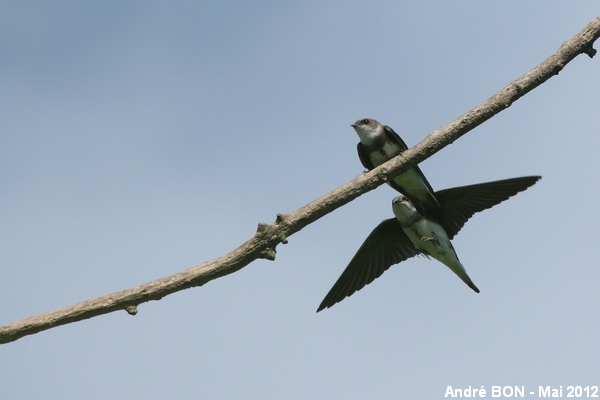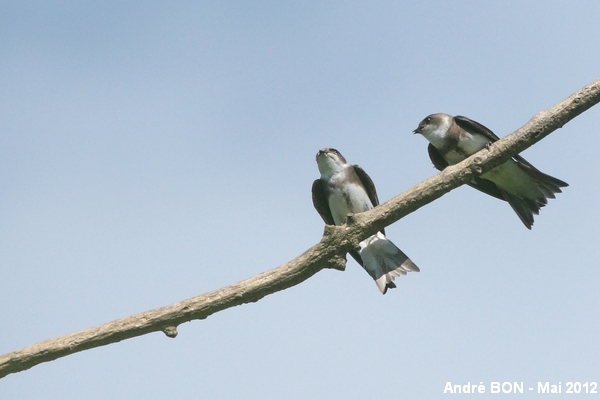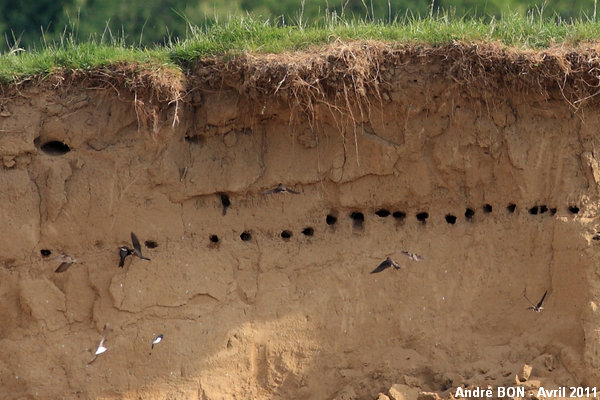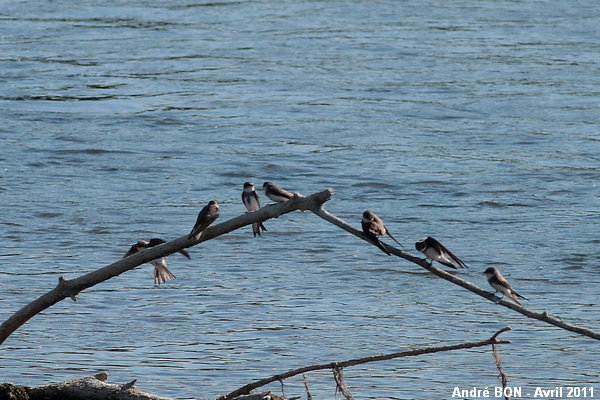




| Sand Martin (Riparia riparia (Linnaeus, 1758)) |





|
|
Scientific name: Riparia riparia (Linnaeus, 1758) Common name: Sand Martin Other names: Bank Swallow, Collared Sand Martin. French name: Hirondelle de rivage Order: Passeriformes Family: Hirundinidae Size: Body size: 12 cm; Weight: 12 to 18 g; Wingspan: about 30 cm. Habitat: Areas with vertical cliffs in friable soil, that's to say easy to dig into. River banks, coastal cliffs, sand quarries, etc. Food: Insects caught in flight. Nesting: Bank Swallows nest in variable sized colonies. The nest is a burrow of about 60 cm long and with a rounded section and opening. It leads to a chamber lined with grasses and feathers. There are generally two broods per year of 4 to 5 eggs (only one brood in the northern regions). Migration: Sand Martins winter in Africa south of the Sahara. North American birds winter in South America. Geographic area: Europe, North America, northern Asia. |
The Sand Martin is the only member of the swallow family to show a brown upper side. The white throat and underside of the body are separated by a thin ashy brown band on the breast. The tail is short and slightly forked. The flight is acrobatic but almost always close to the ground or to water. |
| [To know more about the Sand Martin] [Next picture] [Top] |

|
These Sand Martins came to me while I was sitting in wait to take pictures of European Bee-eaters. |
| [To know more about the Sand Martin] [Next picture] [Previous picture] [Top] |

|
The Sand Martins have perched on a branch of a "Saule têtard" (Willow). I have climbed on the trunk of the next tree not to shoot a very low-angled picture. This was not really sufficient. |
| [To know more about the Sand Martin] [Next picture] [Previous picture] [Top] |

|
The meanders of the Basse vallée du Doubs are a suitable place for Sand martins to nest. There are many cliffs of friable soil. All the nest are aligned. |
| [To know more about the Sand Martin] [Next picture] [Previous picture] [Top] |

|
Here is a closer view (in fact this is a crop). I have shot these pictures with tele lenses from the opposite river bank. The access to the gravel bed, down the cliff, is strictly forbidden from April to end of July. Several species nest directly on these gravel beds and any intrusion could endanger the broods. |
| [To know more about the Sand Martin] [Previous picture] [Top] |

|
This perch, in the middle of the river, is in front of another colony. This times the nesting cliff is just above water. I have not seen the nests but the never-ending going and coming of the adults. |